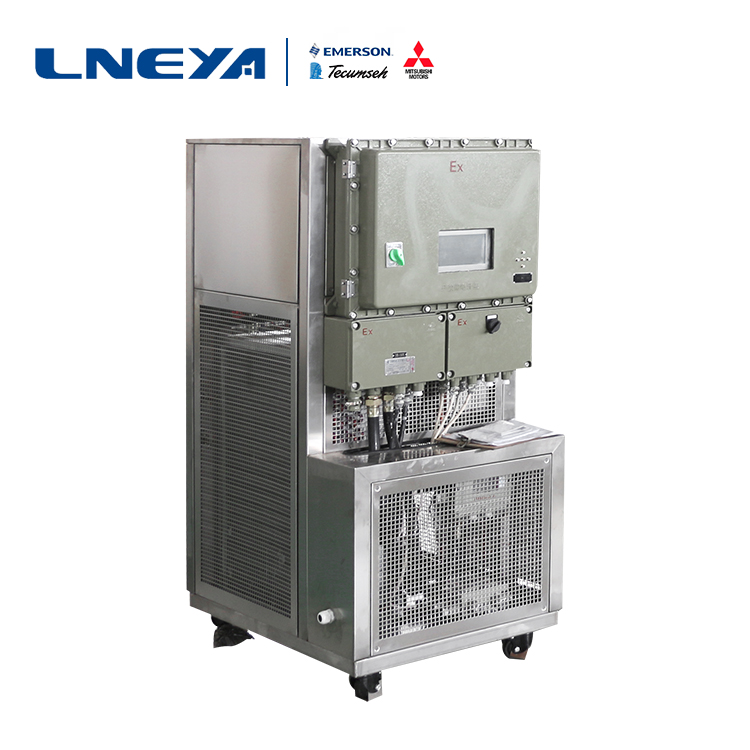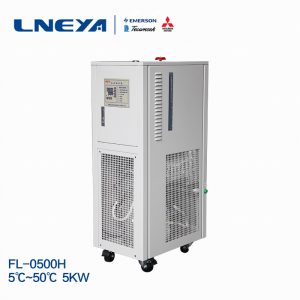Temperaturanstieg im Bioreaktor und Temperaturkontrollgeräte
A bioreactor is a reaction system in which a naturally occurring microorganism or a microorganism having a special degrading ability is inoculated into a liquid phase or a solid phase. The two reactors currently studied the most are “elevator type reactors” and “soil mud reactors”. The elevator type reactor provides the proper nutrients, carbon sources and oxygen through the flow of the aqueous phase to achieve the purpose of degrading pollutants in the soil. Compared to solid phase systems, bioreactors are capable of effectively degrading contaminants in less time.
Bioreactors sound strange, but the basic principles are quite simple. The stomach is a complex bioreactor that processes food inside the body. The food is digested by various enzymes in the stomach and becomes a nutrient that we can absorb. Bioengineering bioreactors are functions that mimic the function of living organisms in vitro and are designed to produce or test various chemical reaction devices. In other words, a bioreactor is a device system that uses a biological function of an enzyme or an organism (such as a microorganism) to perform a biochemical reaction in vitro, and is a biological function simulator such as a fermentor, an immobilized enzyme, or an immobilized cell. Reactor, etc. Then the problem of how to cool the bioreactor is generated.

Wuxi Guanya LNEYA refrigeration heating temperature control system adopts fully enclosed pipeline design, adopts high efficiency plate heat exchanger, and is applied to the temperature rise and temperature control of glass reactor, metal reaction kettle and bioreactor, especially suitable for reaction process. There is a need for heat and heat release process control.
Temperature process control principle (control reactor material temperature)
TCU temperature control unit schematic
1. The method of changing the control set value can respond to the system lag in the process as soon as possible, and obtain the minimum system overshoot. The control consists of two sets of PIDs (each set of PIDs are variable) control loops. These two sets of control loops are called: the primary loop and the slave loop, and the control loop of the master loop is used as the setpoint of the slave loop. The system adopts feedforward PV, and the output of the PID operation result of the main control loop is combined with the feedforward PV signal as the set value of the slave control loop, so that the temperature change gradient is controlled to ensure the temperature control accuracy of the system. (General anti-lag cascade control)
2. A specially designed lag predictor (no model self-built tree algorithm) generates a dynamic signal yc(t) instead of the process variable y(t) as a feedback signal. An e(t) signal is generated to the controller to cause the controller to predict that there is no large hysteresis in the control, so that the controller can always generate a suitable control signal. That is to say, even if there is a large hysteresis, the dynamic signal yc(t) can keep the feedback loop working normally. While the general PID is used to control the process with significant time lag, the controller output is not suitable due to the lag time. The feedback signal keeps growing, causing the system to overshoot and even out of control.
3. Through three-point sampling (material temperature point, temperature control system outlet temperature, temperature control system inlet temperature), through our company’s own model-free self-built tree algorithm and general anti-lag cascade algorithm.
Verwandte Empfehlungen
-
The reason why the cooling water circulator needs the main water circulation
1863The supplement of the water cycle is directed to a water-cooled cooling water circulator, and the air-cooled cooling water circulator does not have this problem. The water-cooled cooling water circulator needs cooling water during normal operation...
Details anzeigen -
Summary – the cause of the failure of the 85 ° C ultra-low temperature refrigerator
1419-85 ° C ultra-low temperature refrigerator in industrial cold treatment, with the development of industry, the scope of use is also wider. However, in the process of use, it will inevitably lead to failure, so how much do you know about common fau...
Details anzeigen -
Electric Vehicle Motor Test Cooling System Chiller Instructions
2037With the continuous development of new energy vehicles, Chiller, the electric motor motor test cooling system, is also developing. The new chiller for motor testing of new energy vehicles can adaptively adjust the chiller according to the dynamic ...
Details anzeigen -
Chip test system analysis why chip test?
1801Functional failure means that a function point is not implemented. This is often caused by design. Usually, it is verified by simulation before the design stage, so usually a chip is designed and the simulation verification takes about 80% of the ...
Details anzeigen
 LNEYA Industriekühler Hersteller Lieferant
LNEYA Industriekühler Hersteller Lieferant














